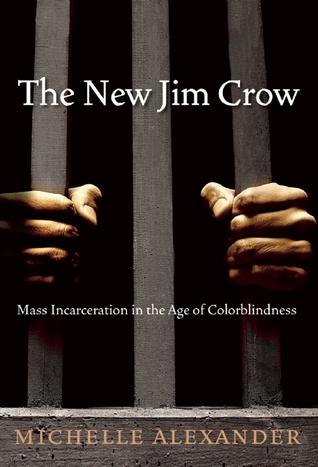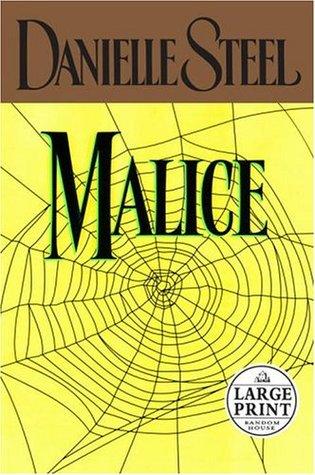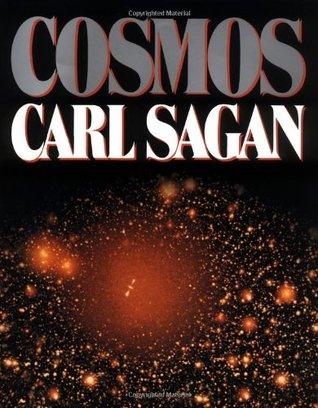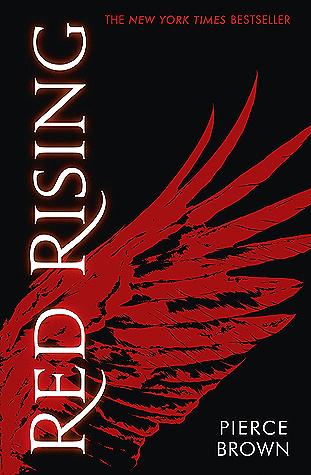The New Jim Crow: Mass Incarceration in the Age of Colorblindness by Michelle Alexander Book Summary
Discover the powerful insights of "The New Jim Crow: Mass Incarceration in the Age of Colorblindness" by Michelle Alexander. This comprehensive summary explores key themes, critical reviews, and essential takeaways from the book, shedding light on the systemic issues of racial injustice and mass incarceration. Read on to understand how this influential work challenges perceptions and calls for social change.
The New Jim Crow: Mass Incarceration in the Age of Colorblindness Book Summary
Michelle Alexander's groundbreaking work "The New Jim Crow" exposes how America's mass incarceration system functions as a modern form of racial control, systematically targeting Black communities through the War on Drugs. Alexander argues that this criminal justice system creates a permanent underclass of disenfranchised citizens, effectively recreating the racial hierarchy that Jim Crow laws once maintained. Her meticulously researched analysis reveals how colorblind racism operates through seemingly neutral policies that disproportionately impact African Americans, challenging readers to confront uncomfortable truths about contemporary racial inequality and the illusion of post-racial America.
Discover profound insights and a compelling narrative in The Lemon Tree: An Arab, a Jew, and the Heart of the Middle East Book Summary, Review & Key Insights to deepen your understanding of this powerful story.
The New Jim Crow: Mass Incarceration in the Age of Colorblindness by Michelle Alexander - Introduction
I was honestly shocked to learn that mass incarceration in the U.S. isn’t just about crime or drugs—it’s actually a modern system of racial control that’s deeply woven into our laws and society. I had no idea that after the Civil Rights Movement, instead of dismantling racial caste systems, a new one was created through the prison system. That insight completely changed how I see the justice system and race relations in America.
I picked up The New Jim Crow because I kept hearing about it in conversations about race and social justice, and I wanted to understand why it’s considered such a groundbreaking book. Plus, I’m always drawn to nonfiction that digs into history and politics because it helps me make sense of the world today.
If you care about race, social justice, or even just want to understand the political and legal forces shaping our society, this book is a must-read. Whether you’re new to these topics or already engaged, Michelle Alexander’s writing makes complex issues clear and personal. It’s about 290 pages, so you can get through it in a few focused reading sessions or listen to the audiobook version if you’re on the go.
Honestly, if you want to challenge your assumptions and really get why the fight against systemic racism is far from over, this book will open your eyes in a way that nothing else has for me. It’s nonfiction, but it reads with the urgency and passion of a powerful story. Give it a try—I promise it’ll make you think differently.
What is The New Jim Crow: Mass Incarceration in the Age of Colorblindness About?

"The New Jim Crow: Mass Incarceration in the Age of Colorblindness" by Michelle Alexander examines how systemic racism has evolved in the United States, particularly through the criminal justice system, creating a racial caste system that disproportionately affects African Americans. The main message is that mass incarceration functions as a contemporary form of racial control, perpetuating inequality and social injustice. Key concepts include the idea that the War on Drugs has targeted communities of color, the role of legal discrimination in maintaining social hierarchies, and the societal implications of viewing racial issues through a colorblind lens.
About Book Author - Michelle Alexander
Tonight, we have someone whose journey profoundly shaped her groundbreaking work. Michelle Alexander didn't start out as the powerful voice behind The New Jim Crow: Mass Incarceration in the Age of Colorblindness. In fact, when she began her career as a civil rights lawyer, particularly during her time directing the Racial Justice Project at the ACLU of Northern California, she was initially skeptical of the idea that the criminal justice system was a new form of racial control.
What's interesting about Michelle Alexander is that it was her direct experience, seeing the devastating patterns and the human cost firsthand, that compelled her to investigate and ultimately expose the systemic issues. This wasn't just academic for her; it was a difficult, personal awakening. Her ability to connect historical racial caste systems with contemporary mass incarceration comes from this deep immersion and rigorous analysis, a perspective she continues to share through her insightful columns and teaching. This evolution from skeptic to clarion voice is precisely why she’s uniquely positioned to illuminate this critical subject for us.
More Books To Find
The New Jim Crow: Mass Incarceration in the Age of Colorblindness - Book Overview
The main idea is pretty straightforward: it argues that the mass incarceration of Black Americans is a modern-day racial caste system, akin to the Jim Crow laws of the past. Instead of overt discrimination, we now have a system that appears neutral but disproportionately targets people of color, especially through the war on drugs.
Why the author wrote it: Michelle Alexander wasn't just looking to highlight injustices; she wanted to spark a movement. She believes that understanding this issue is crucial for real change. It’s about waking people up to the reality that the system is rigged, and it’s not just about individual choices or criminal behavior; it’s deeply embedded in societal structures.
What makes it different: Unlike other books that discuss racism or incarceration, Alexander connects the dots between various social issues, like poverty, education, and employment, showing how they’re all interlinked. It’s not just a critique; it’s a call to action, urging readers to see the bigger picture.
One specific example: One story that really hit me was about how a young Black man, despite being a straight-A student, was pulled into the criminal justice system for minor drug offenses. His entire life trajectory changed because of a single encounter with the police, illustrating how easily potential can be snuffed out by systemic injustice. It’s a stark reminder of how fragile opportunities can be in the face of such a biased system.
Key Insights of The New Jim Crow: Mass Incarceration in the Age of Colorblindness
Mass Incarceration is a contemporary system of racial control, comparable to the Jim Crow laws. Alexander argues that the U.S. criminal justice system disproportionately targets African Americans, leading to a cycle of disenfranchisement and marginalization.
War on Drugs is a significant driver of mass incarceration. The policies enacted during this period have resulted in the over-policing of communities of color, leading to higher arrest rates for minor drug offenses, which are often treated more harshly than similar offenses in white communities.
Colorblindness is a pervasive ideology that obscures the racial disparities within the justice system. Alexander emphasizes that ignoring race does not eliminate racism; instead, it perpetuates systemic inequalities and prevents meaningful dialogue about racial justice.
Social Stigma attached to incarceration creates barriers for those who have been imprisoned. Once released, individuals face obstacles in employment, housing, and voting rights, which reinforces their marginalization and limits their ability to reintegrate into society.
Call to Action: Alexander urges readers to recognize and challenge the systemic injustices of mass incarceration. She advocates for a collective movement to dismantle these oppressive structures, emphasizing the need for awareness, advocacy, and policy reform to achieve true racial equality.
Who Should Read This Book
"The New Jim Crow" is essential reading for anyone interested in social justice, criminal justice reform, and racial equality. Activists, educators, and policymakers will find valuable insights into the systemic issues of mass incarceration and its impact on communities of color. Additionally, individuals seeking to understand the nuances of racial discrimination in contemporary society will benefit from Alexander's compelling arguments. This book is also crucial for students and scholars of sociology, law, and history, as it challenges readers to confront uncomfortable truths about race and justice in America.
Read If You Are
- A social justice advocate seeking to understand systemic racism in the criminal justice system.
- An educator or student interested in exploring the intersections of race, law, and policy.
- A concerned citizen wanting to engage in informed discussions about mass incarceration and its societal impacts.
Skip If You Are
- Skip if you believe systemic racism is a myth and prefer to ignore social justice issues.
- Skip if you are not interested in understanding the impact of mass incarceration on marginalized communities.
- Skip if you are uncomfortable confronting your own biases or the realities of the criminal justice system.
Important Takeaways from this Book
-
Educate Yourself on Mass Incarceration: Start by reading “The New Jim Crow” or similar resources to understand the systemic issues surrounding mass incarceration. This knowledge empowers you to engage in informed discussions and advocate for change. Consider joining a local book club focused on social justice to deepen your understanding and connect with like-minded individuals.
-
Support Local Organizations: Research and donate to organizations that work to combat mass incarceration and support affected communities. Your financial support helps fund programs that provide legal assistance, education, and rehabilitation. Look for local nonprofits or national organizations with a proven track record in advocacy.
-
Engage in Community Activism: Attend local meetings or rallies focused on criminal justice reform. This allows you to voice your concerns and connect with others who share your passion for change. Check community boards or social media for upcoming events, and commit to attending at least one this month.
-
Advocate for Policy Change: Write to your local representatives about the need for criminal justice reform, focusing on specific policies that contribute to mass incarceration. Your voice matters in shaping policy and can influence decision-makers. Prepare a clear, concise message outlining your concerns and proposed solutions.
-
Practice Conscious Consumerism: Be mindful of where you spend your money and support businesses that prioritize social justice and equitable hiring practices. This action helps create economic opportunities for marginalized communities. Research companies’ practices and choose to support those that align with your values.
Implementing these actions not only contributes to social justice but also fosters a community committed to equity and reform.
Book Review
I picked up "The New Jim Crow" expecting a dense academic text, but I was pleasantly surprised by Michelle Alexander's engaging writing style. She presents complex ideas in a way that's accessible and compelling, drawing me in from the first chapter.
One of the book's greatest strengths is its use of real-life examples to illustrate the devastating impact of mass incarceration on communities of color. The stories of individuals caught in the web of the criminal justice system were both heartbreaking and eye-opening. The statistics and historical context she provides are meticulously researched, making a strong case for her argument about systemic racism in America.
However, I felt the pacing slowed down in the middle sections, where the legal jargon and detailed policy discussions became a bit overwhelming. While I appreciate the depth of information, a more streamlined approach could have kept my engagement high throughout.
Compared to other books I've read on social justice, like "Just Mercy" by Bryan Stevenson, Alexander's work is more focused on the overarching systemic issues rather than individual stories. Both are powerful, but Alexander's perspective on the intersection of race and mass incarceration offers a unique lens that I found crucial.
Overall, I think "The New Jim Crow" is a must-read for anyone interested in understanding the complexities of race and justice in America. However, if you're looking for a lighter read or a narrative-driven story, this might not be for you. It’s a challenging but rewarding read that left me with a deeper understanding and a sense of urgency to advocate for change.
Final Thoughts
If I'm being honest, finishing The New Jim Crow was a real eye-opener for me. Michelle Alexander lays out how mass incarceration functions as a modern racial caste system, and it’s hard to ignore the implications. My overall takeaway is that systemic racism is deeply entrenched in our society, and this book provides a crucial perspective on that issue.
I'd definitely recommend this if you're someone who cares about social justice or wants to understand the complexities of race in America. However, skip this one if you're looking for a light read or if you’re not ready to confront uncomfortable truths about our justice system.
The thing that surprised me most was how the book connected the dots between past injustices and current policies, making it clear that this isn’t just a historical issue but an ongoing crisis. One thing that will stick with me months from now is the idea that we all have a role to play in challenging these systems.
I would recommend the full book over a summary because Alexander's arguments are nuanced and deserve the depth she provides. Overall, this reading experience has been both challenging and enlightening, and I'm glad I took the time to dive into it.
Frequently Asked Questions
How long does it take to read The New Jim Crow: Mass Incarceration in the Age of Colorblindness?
It typically takes about 7 to 10 hours to read "The New Jim Crow: Mass Incarceration in the Age of Colorblindness" by Michelle Alexander, depending on your reading speed. With 290 pages, you might read approximately 30-40 pages per hour.
What makes "The New Jim Crow: Mass Incarceration in the Age of Colorblindness" different from other books in this genre?
The New Jim Crow stands out for its compelling argument that mass incarceration functions as a contemporary system of racial control, akin to Jim Crow laws. Michelle Alexander combines rigorous research with personal narratives, making a profound emotional impact while challenging readers to confront systemic racism and societal complicity.
Who is the target audience for The New Jim Crow: Mass Incarceration in the Age of Colorblindness
The target audience for "The New Jim Crow" includes activists, policymakers, educators, and general readers interested in social justice, racial inequality, and criminal justice reform. It appeals to those seeking to understand systemic racism and its impact on society, particularly regarding mass incarceration.
Are there any criticisms or limitations of The New Jim Crow: Mass Incarceration in the Age of Colorblindness
Critics argue that the book oversimplifies complex issues of race and criminal justice, potentially neglecting socioeconomic factors. Some feel it lacks actionable solutions and may present a one-sided view, while others contend that its focus on mass incarceration overlooks other forms of systemic racism.
What is the main theme of The New Jim Crow: Mass Incarceration in the Age of Colorblindness by Michelle Alexander
The main theme of "The New Jim Crow" is that mass incarceration functions as a contemporary system of racial control, perpetuating racial discrimination and inequality under the guise of a colorblind society, effectively creating a racial caste system that disenfranchises millions of African Americans.
Tags:
Michelle Alexander, The New Jim Crow: Mass Incarceration in the Age of Colorblindness, The New Jim Crow: Mass Incarceration in the Age of Colorblindness Author, The New Jim Crow: Mass Incarceration in the Age of Colorblindness Book, The New Jim Crow: Mass Incarceration in the Age of Colorblindness Book Description, The New Jim Crow: Mass Incarceration in the Age of Colorblindness Book Rating, The New Jim Crow: Mass Incarceration in the Age of Colorblindness Book Review, The New Jim Crow: Mass Incarceration in the Age of Colorblindness by Michelle Alexander, The New Jim Crow: Mass Incarceration in the Age of Colorblindness ISBN, The New Jim Crow: Mass Incarceration in the Age of Colorblindness Short Summary

Michel Fisher
Michel Fisher is a passionate fiction enthusiast and book blogger who writes about emotional reads, character-driven stories, and contemporary romance authors that captivate hearts and minds.

The New Jim Crow: Mass Incarceration in the Age of Colorblindness
Book Overview
Description
"Jarvious Cotton's great-great-grandfather could not vote as a slave. His great-grandfather was beaten to death by the Klu Klux Klan for attempting to vote. His grandfather was prevented from voting by Klan intimidation; his father was barred by poll taxes and literacy tests. Today, Cotton cannot vote because he, like many black men in the United States, has been labeled a felon and is currently on parole."As the United States celebrates the nation's "triumph over race" with the election of Barack Obama, the majority of young black men in major American cities are locked behind bars or have been labeled felons for life. Although Jim Crow laws have been wiped off the books, an astounding percentage of the African American community remains trapped in a subordinate status--much like their grandparents before them.In this incisive critique, former litigator-turned-legal-scholar Michelle Alexander provocatively argues that we have not ended racial caste in America: we have simply redesigned it. Alexander shows that, by targeting black men and decimating communities of color, the U.S. criminal justice system functions as a contemporary system of racial control, even as it formally adheres to the principle of color blindness. The New Jim Crow challenges the civil rights community--and all of us--to place mass incarceration at the forefront of a new movement for racial justice in America.
Key Points
Mass incarceration as racial control
Characters
Publisher
The New Press





